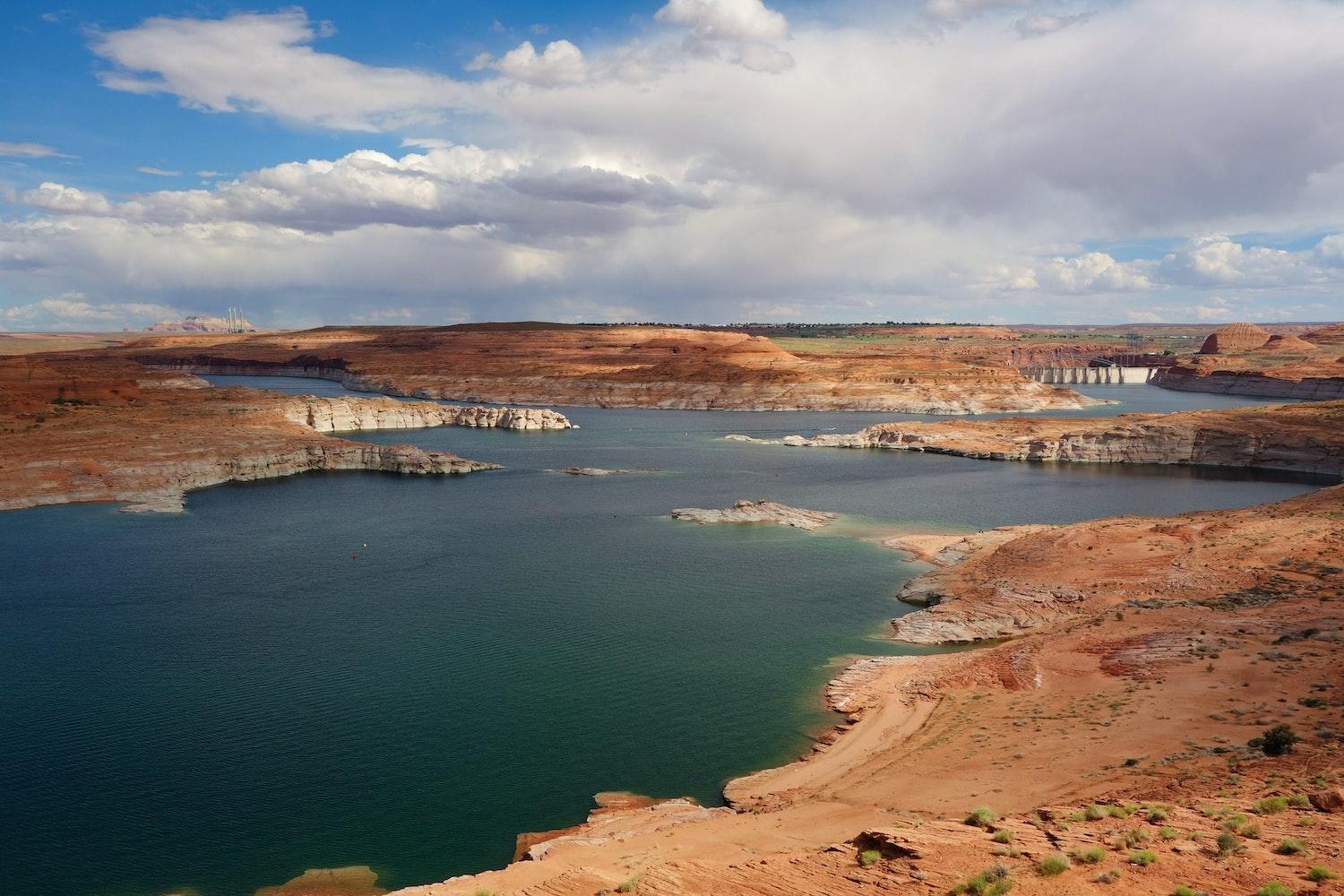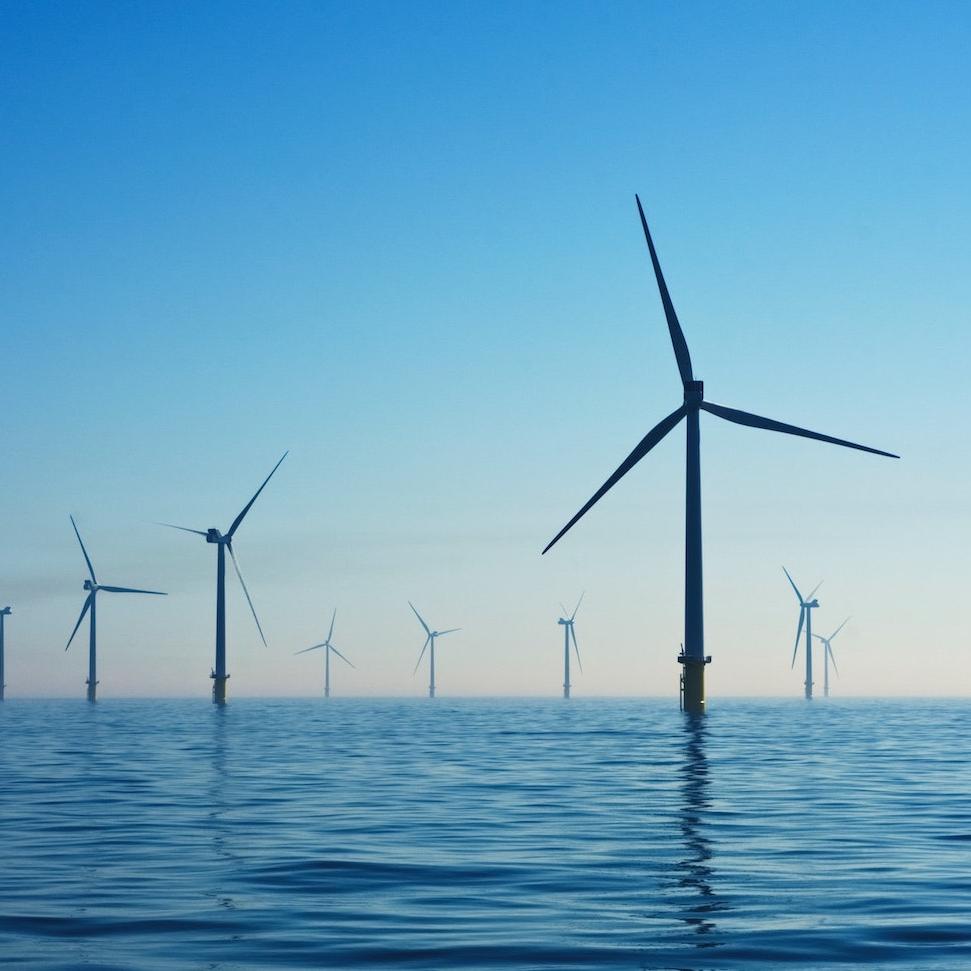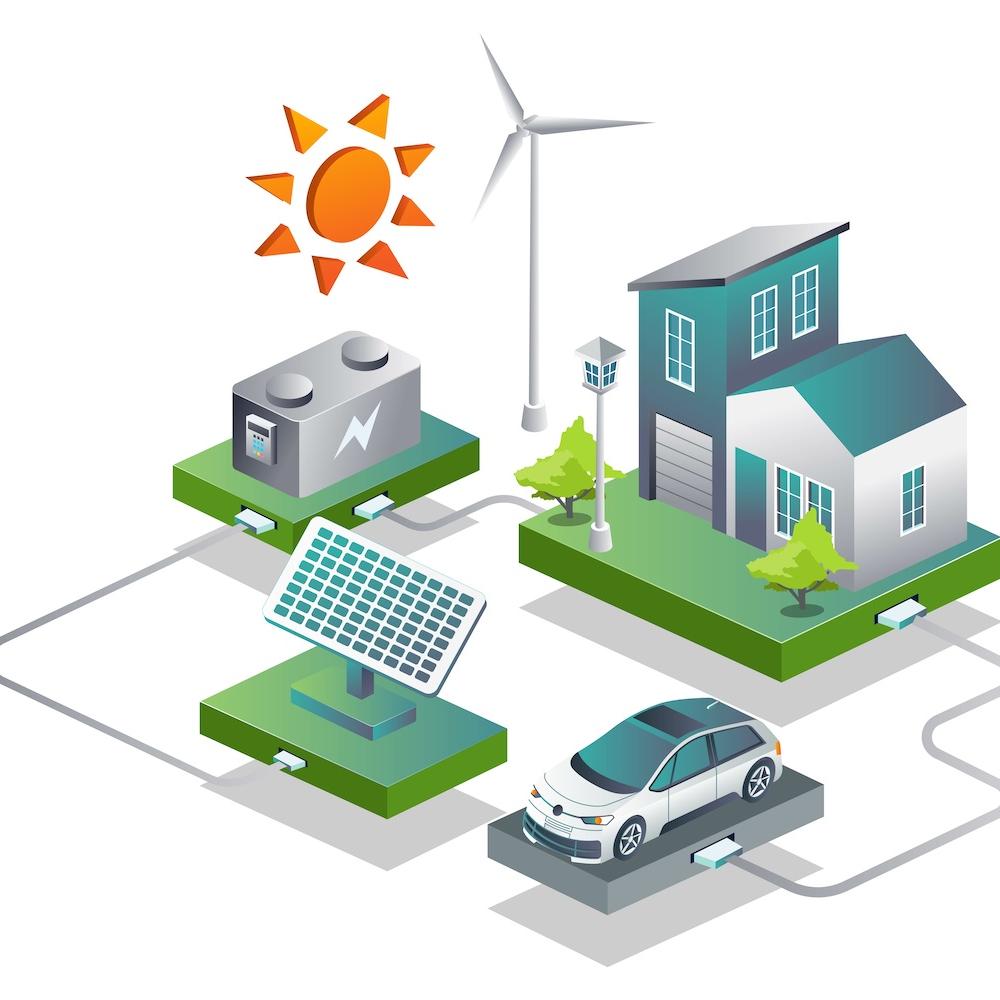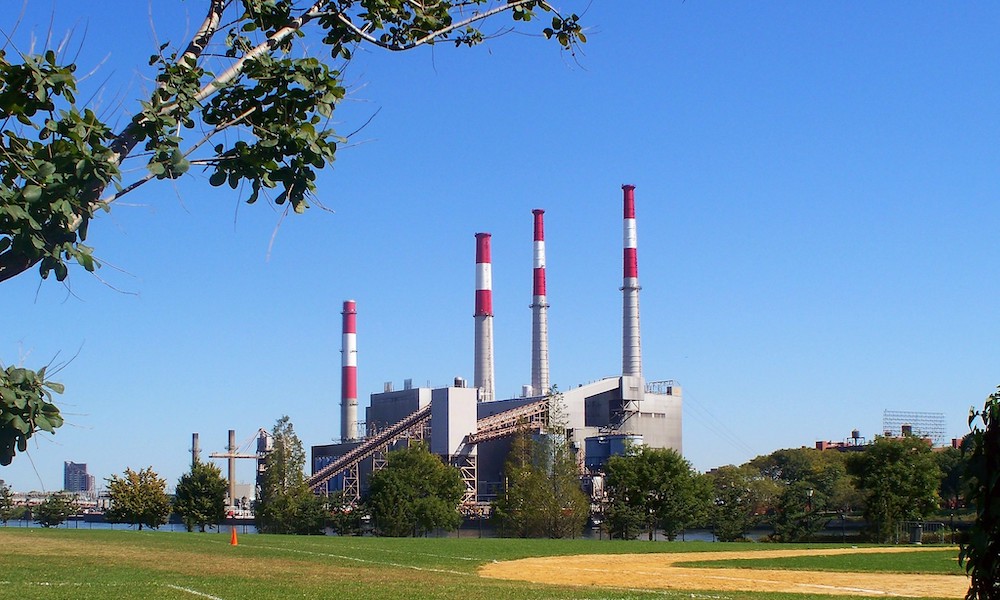More Investment is Needed for For Sustainable Aviation To Take Off


The aviation industry, under increasing pressure to curb its fast-growing carbon emissions, is placing huge bets on both sustainable aviation fuel (SAF) and electric aviation to meet its net-zero carbon emissions goal by 2050.
But while some predictions are optimistic, including that the aviation industry will be 25 percent electric or hybrid by 2025, a more likely scenario is that the first fully electric flights will be limited to a few regional or short-haul trips. Yet with an estimated half of all global flights totaling under 500 miles, that's a lot of potential for cutting GHG emissions.
In 2021, aviation was responsible for over 2 percent of global energy-related carbon emissions, having grown faster in recent decades than road, rail or shipping. Despite a temporary decline due to the COVID-19 pandemic, emissions from the sector are expected to surpass their 2019 level over the next few years.
First all-electric planes take flight
It's no surprise, then, that Alice — the world's first all-electric passenger commuter aircraft made by Washington state-based Eviation Aircraft — made headlines for its test flight in September. Some major players like United Airlines are setting their sights on having electric aircraft flying regional routes by 2030.
Another new kid on the block for electric aircraft is Swedish hybrid electric airplane maker Heart Aerospace, and major airlines like Air Canada, Saab, United, Icelandair, SAS and others have been snapping up sizable investments in its hybrid-electric planes.
Show me the money
But while fully electric airplanes capture the imagination, the reality of sustainable aviation can look different on the ground. More research is needed to make the technology available for larger commercial flights. And, not least, there needs to be sufficient capital investment in the transformation of aviation toward more sustainable solutions. One recent report estimated that achieving net-zero aviation will cost $175 billion per year until 2050.
For Niklas Lund, CEO of Stockholm-based Rockton, a company focused on sustainable and climate-change mitigating aviation investments and assets, the answer is clear. Rockton has signed a letter of intent for 40 of Heart Aerospace aircraft and champions the technology breakthroughs among companies. However, Lund warns that sufficient investment has got to be part of the solution.
"We're going to need a massive investment of capital," Lund says. "And the question is: Can the aviation industry carry that capital investment by themselves? And my view is no, they won't be able to do that. They need external capital to help them or to facilitate it."
Governments help bridge the supply gap for sustainable aviation fuel
One big hurdle is sufficient supply of sustainable aviation fuel (SAF), which Lund predicts airlines will need for some time to meet their carbon goals. The competition for SAF also comes from other industries clamoring for renewable feedstocks to meet their climate commitments.
For that reason, the industry was delighted when the 2022 U.S. Inflation Reduction Act (IRA) included a tax credit for SAF. This means that along with multi-year agreements already in place for millions of gallons of SAF airlines have recently purchased, the blenders' tax credit boosts renewable fuel producers' ability to raise the billions of dollars of financing required to build planned biorefineries.
The European Commission has proposed legislation that increases the uptake of SAF by airlines, the EU ReFuelEU Aviation Initiative, part of the EU's goal to reduce emissions by at least 55 percent by 2030.
And in response to the U.S. IRA, the EU is proposing the new Net-Zero Industry Act, which includes, among other steps, an ambition to speed up permits processes for clean-tech production sites and more financial support for clean-tech development.
Lund expects the new EU legislation to include "sizable and long-term financial incentives for clean technologies, including support for aviation."
Customers pledge to boost supply
The SAF supply challenge matters to airlines' corporate customers, too, as they pledge their own ambitious climate goals. Bank of America, for instance, aims to support the production and use of 1 billion gallons of SAF by 2030 to help meet its 2050 net-zero goal.
"With the government support that we're seeing and the push from the corporate market to make their own investments in sustainable aviation, we're beginning to see the kind of commitment to the transformation we need for sustainable aviation to really take off," Lund says.
Image credit: Ross Parmly/Unsplash
Why the U.S. Native Seed Shortage Matters


Intensified extreme weather events from climate change, including more frequent wildfires, are threatening native plants and ecosystems. Burned and damaged landscapes require restoration with native seeds, but according to a new report from the National Academies of Sciences, Engineering and Medicine, the U.S. is running out. Native plant communities are necessary for healthy, biodiverse ecosystems that support wildlife habitat and provide beneficial environmental services.
“We have never had enough seeds for restoration, and the demand is increasing," said Dr. Kayri Havens, a senior scientist and director of plant science and conservation at the Chicago Botanic Garden.
"As we see more and more natural disasters related to climate change — in particular wildfires in the west, as well as hurricanes and mudslides — the need for restoration continues to grow," continued Havens, who has a background in restoration ecology, conservation biology, and seed-sourcing for restoration. "Add that to the threats our native communities already faced from invasive species, pests and pathogens. A lot of our public land is degraded and would benefit from restoration.”
Why is the U.S. short on seeds, and why does it matter?
Seed economics is tricky. The demand for native seeds fluctuates each year, largely correlating with the number of wildfires the U.S. experienced. “How much seed you’ll need in a year is not predictable, and it may be five times more in bad wildfire years," Havens explained. "This episodic nature of restoration needs after natural disasters means that the demand for native seeds has never been clear and consistent. When we have a bad fire year and a big need for seed, there is not enough native seed — let alone native seed sourced regionally — to put down on the land after fire degrades it.”
However, there are ways to improve the native seed supply. Proactive restoration, or putting down native seeds before a land parcel is completely degraded, helps keep demand consistent. Federal agencies can also refuse to accept substitutions for regionally-sourced native species, which creates more of an incentive for seed suppliers to diversify their offerings, Havens said.
Federal agencies can help increase and stabilize the seed markets by proactively preparing for degradation. “Many of our public lands are considered multiple-use and are managed by multiple agencies," Havens told us. "In addition to being managed for conservation and recreation, they are also managed for extractive uses, including logging and oil and gas development. With extractive uses, we often see a need for restoration."
But activities like logging and mining aren't the only threat to biodiversity on U.S. public lands. "Even in areas that have not been impacted by extractive use, non-native species are constantly a problem," she continued. "Particularly in the western U.S., we are seeing cheap grass run rampant over federal lands. When the land is dominated by a non-native species, it is also ripe for restoration. There are hundreds of thousands of acres that fall into this category.”
The land restoration process is decentralized, and each managing agency makes seed requests as parcels of land become flagged for restoration — which can carry its own challenges. “As agencies make requests, seeds may or may not be available," she explained. "If the agencies accept substitutions, then they reduce the incentives for the seed industry to change what it offers.”
From the federal government down to individuals, everyone has a role in safeguarding native seeds
Havens acknowledged why seed producers may not be eager to diversify their offerings, as seed production is a financially risky line of work. “It’s a risk to develop a new species and takes many years," she said. "We are looking at contracts that share that risk. Can these agencies contract in advance for seeds and share some of the financial risk with the producers in case that seed fails? It’s something to consider.”
Further, proactively restoring federal lands can reduce market fluctuations and uncertainties. “We think the buying power of the federal government can affect needed change,” Havens told us.
While the report outlines 10 recommendations for the federal government to create a more robust, secure seed industry, there are measures that individuals can also take. “The more people who are asking for native plants to use in any context, whether you are a land manager or a homeowner wanting to plant in your backyard, that demand will translate to a more robust supply of native seed."
Image credit: Joshua Lanzarini/Unsplash
Researchers Propose a Plan for California's Water Woes


Water in the American West is making the news once again. This time, in a nail-biter of a deadline for water cuts from the highly stressed Colorado River, six states agreed to reduce their withdrawals. California, which uses the most water from the river, followed up with its own plan a day later. But in light of the multi-year drought and recent torrential rains and atmospheric rivers in the state, water remains a constant stressor.
Despite the 32 trillion gallons of water the recent storms dumped on the state, California remains in drought — albeit a much less severe one compared to a few months ago. But it's a temporary reprieve at best. The state will continue to need to cut its water consumption and demand given the impacts of climate change. Further, the intensity of the rainfall indicates another instance of the severity of climate impacts on the state: wetter wet periods and drier dry spells.
Infrastructure woes compound California's water troubles
On top of the climate impacts, California's water infrastructure is dire need of an upgrade. This matters for many reasons, not least of which is the fact that the state is the leader in agricultural output. It's that sector which will likely get hit the hardest with conservation measures when they come.
Lake Mead and Lake Powell, fed by the Colorado River and the two largest reservoirs in the U.S., are reaching dead pool status, meaning water levels become too low to flow downstream. About 75 percent of the reservoir's water goes to agriculture, with the rest going toward residential and commercial uses, including power generation.
California researchers offer solutions to boost water infrastructure in the state
A recent report from the Milken Institute, a nonpartisan economic think tank based in Santa Monica, offers some potential solutions to California's challenges around water infrastructure.
"On top of mounting drought-related challenges, lack of governance collaboration, project acceleration and financial solutions threatens vital systems reliant on California's water infrastructure, like the state's $50 billion agriculture economy," Matt Horton, director at the Milken Institute's Center for Regional Economics, told TriplePundit.
All of this has added up to stalled infrastructure investments and inadequate ability to respond to extreme water events. While California remains one of the leaders in tackling climate mitigation challenges through its cap-and-trade program and renewable energy investments, the equivalent investment in resilience and adaptation has not materialized to the degree needed.
The report, entitled Sharing the Cost: Accelerating Water Resilience Through Infrastructure Finance in California, aims to address that gap with a number of targeted recommendations. Those include improved coordination at the state and federal levels, as well as at the regional level across the Central Valley, where the bulk of the agricultural sector is centered, particularly around the urban/rural divide when it comes to water demand and consumption.
Researchers also note that addressing the financial imbalance related to water investments can help. "California spends about $37 billion on its water system annually with most funding (84 percent) coming from local utilities, followed by state (13 percent) and federal (3 percent) contributions," Horton said.
This imbalance goes right to the heart of the title of the report, and researchers note that collaboration between well-funded and underfunded water districts could help equalize the water stresses. One of the ways they recommend coordination is through a Water Excellence Center, which could act as both a data clearinghouse for funding gaps as well as a centralized tool to accelerate financing and technical assistance.
While much of the recommendations center on improving public investment in water infrastructure, the private sector remains a key player. Public money will never be enough to address the state's water needs, so some mechanism for improving the options for public-private partnerships remains vital. When it comes to water, engaging the private sector can sometimes cause alarm. Water is, after all, an essential public good. Because of the pressure placed on water sources, however, private investment must factor into the solutions. Further, more companies are seeing their own risks related to water demand and consumption and starting to look at watershed health and water stewardship more seriously in their sustainability plans.
"A whole state approach"
Water is often very local, but that is more complicated in California. The northern part of the state is much wetter than the southern part, and water must be delivered — at high energy and water costs. The system is set up according to needs many decades ago. A state rich in natural resources, diverse in economies and populations, and feeling the hard impacts of climate change must look how it balances the whole. Horton and the Milken Institute see the answer in a "whole state approach."
He quoted from the state's 1957 water plan: "California is presently faced with problems of a highly critical nature — the need for further control, protection, conservation and distribution of her most vital resource, water. … Unless correct action is taken -and taken immediately – the consequences may be disastrous."
And he takes that warning, made long before anyone understood climate change, as "a good reminder that we are going to have to collectively marshal the style of governance, coordination and political will that was harnessed in the past in order to build a water infrastructure system to meet the needs of the 21st century — one that is prepared for drier dries and wetter wets."
The bottom line
California's water challenges do not exist in isolation. The recent deadline for Lake Powell and Lake Mead was just the reminder that California is part of a larger water ecosystem. But the state also has an outsized impact on demand and must consider how to do things differently if it is to be able to provide safe, reliable water for all its residents and sectors.
Image credit: Silvia Fang/Unsplash
Coal is Totaled. Will Coal-stalgia Continue to Impede Renewable Energy Investment?


Coal is like America's first car — it's not much to look at, but it got us where we needed to go. It took awhile for us to warm up to it, but coal helped create some of America's best memories and achievements. Yet every first car eventually reaches a point when the cost of upkeep becomes greater than the cost of something new.
Likewise, coal is totaled.
A new report from the climate think tank Energy Innovation found the cost of maintaining an existing coal plant is greater than the cost of constructing a new wind or solar farm. But is the U.S. ready to let go?
Trouble in coal kingdom
West Virginia is the seat of power for the U.S. coal industry. Though the state of Wyoming produces more coal, West Virginia's culture is more coal-centric in its production and consumption.
Folks on every rung of West Virginia's social ladder have intimate connections to coal, from miners to plant operators to corporate CEOs. Though coal has steadily lost national support, and even lost the support of some West Virginia coal miners, the fossil fuel maintains a chokehold around the state's economy and culture.
Indeed, even West Virginia Sen. Joe Manchin, is essentially a modern day coal baron with the equivalent of an ultimate veto power on all national energy legislation. Manchin's unabashed conflicts of interests are, at least, transparent. As the owner of multiple private coal companies, the senator has a clear vested interest in prolonging the coal industry for as long as possible. Although Sen. Manchin may be the nation's de facto Coal King, his kingdom is in fast decline.

As the appeal of renewable energy grows, coal can't keep the lights on
While West Virginia houses some of the most stubborn of coal supporters, it also hosts the best arguments for transitioning away from coal and toward renewable energy. The state of 1.8 million people employs fewer coal miners each year, from over 23,000 in 2011 to 11,500 in 2021. This is a far cry from the state's purported "peak coal employment" in 1940, when 130,457 men worked the mines of the mountain state, accounting for about 7 percent of the total population. Nowadays, less than 1 percent of West Virginians are employed as coal miners.
The state may not rely on coal jobs for support anymore, but it overwhelmingly relies on coal for energy. As the rest of the U.S. began to transition away from coal, West Virginia doubled down on its cash crop. In the state most dependent on coal-fired energy, some residents pay more for their energy bill than their mortgage. Essentially, coal jobs no longer support the economy, and coal power doesn't support its residents.
Coal crusaders have long been able to fall back on economic arguments in favor of coal, emphasizing the sunk costs of existing coal mines and casting doubt on the potential gains of renewable energy. Left without a leg to stand on, industry leaders and coal-allied politicians now make their last-ditch final effort to thwart progress: desperate appeals to nostalgia in coal country.
Clinging to cultural coal-stalgia?
It could be argued that Americans are always resistant to change. When the government announced in 2020 its plan to phase out the penny — which costs two cents to manufacture, on top of its environmental harm — Americans formed the "Save the Penny" movement, which argued that the $72 million spent each year on manufacturing pennies is worth it because the penny is nostalgic and historic.
West Virginian leaders recognize the same sentimentality toward coal, and their pro-coal rhetoric has likewise shifted from economic arguments relying on statistics to emotional arguments relying on stories.
These are the death throes of the stubborn survivors of a bygone era; these are the exasperations of a candle salesman who has just seen a light bulb.
But coal stakeholders can delay, not prevent, the inevitable, and the winds of change have begun to blow even into the deepest coal mines in West Virginia. Renewable energy investments, like a developing solar grid built on old mine lands and plans for a new iron-air battery factory, have repositioned the Mountain State from trailer to trailblazer.
Image credit: Yaroslav Maltsev/Unsplash and Wikimedia Commons
Congressional Leaders Revive Legislation Aimed at Justice for Black Farmers


Sen. Cory Booker (D-N.J.) and Rep. Alma Adams (D-N.C.) reintroduced the Justice for Black Farmers Act earlier this week in a renewed effort to repair decades of discrimination against Black farmers. Aimed at addressing a history of bias within agriculture, the proposed legislation includes provisions to support a new generation of Black farmers while protecting Black farmers who are at risk of losing their land.
The bill takes aim at the discriminatory practices of the U.S. Department of Agriculture (USDA), which have led to the racial disparities in agriculture that TriplePundit has long reported. Among other things, it would reform discriminatory lending and assistance programs that have led to significant land loss for Black farmers: In the last century, the number of Black farmers has shrunk from 14 percent to 1.4 percent of all U.S. farmers.
The legislation would also provide funding to resolve farmland ownership and succession issues, as well as training, financial, and technical assistance for existing and aspiring Black farmers and ranchers.
Key provisions would:
- Establish an independent board to oversee civil rights within the USDA and a Civil Rights Ombudsman to help individuals navigate the process of complaints against discriminatory practices
- Provide land grants and training to eligible Black farmers
- Establish a Farm Conservation Corps to help qualified young people aged 18 to 29 from socially disadvantaged groups to pursue careers in agriculture
- Provide $500 million per year for 10 years to historically Black colleges and universities (HBCUs) to conduct agriculture research, offer courses and recruit students
- Increase funding to protect Black land ownership and provide additional credit assistance
All of this would go a long way to Leveling the Fields, as a policy brief from the Union of Concerned Scientists described it. What is at stake, proponents of the bill argue, is nothing less than the future of sustainable and resilient food systems. With the number of U.S. farms in steady decline, just when the world is challenged to double food production by 2050, the agriculture industry needs all of the talent it can attract — particularly younger and more diverse generations.
As Osmanjana Goswami, an interdisciplinary scientist with the Union of Concerned Scientists, observed: “Beginning farmers face challenges to take up farming, and this is particularly true for farmers from Black, Indigenous, refugee and immigrant populations,” noting that a Farm Conservation Corps, one of the bill’s provisions, would provide a much-need helping hand for those young adults.
Attempts to address past racial discrimination at the USDA have been controversial, with legal battles underway over the USDA’s loan forgiveness program for Black farmers and other farmers of color. In one such case last June, a judge blocked the USDA from repaying Black farmers who had previously qualified for the program. Black and other minority farmers are fighting back, suing the federal government for keeping a promised $4 billion in debt relief in limbo while white farmers take the program to court.
Yet the timing may be favorable — if Booker and Adams can succeed in embedding the bill’s provisions in the 2023 Farm Bill, the twice-a-decade omnibus food and farm policy legislation that is up for renewal this year.
Image credit: paulaphoto/Adobe Stock
Net Zero Goals: Moving from Why to How to Now


In 2020, Meta achieved net zero greenhouse gas emissions for our global operations and today, we are supported by 100 percent renewable energy. These are good first steps, but we have so, so much work still to do to become a fully sustainable company.
That was my thought as I arrived in Sharm El-Sheikh, Egypt, for the 27th annual U.N. climate conference, or COP27. Held in November 2022 and dubbed the Climate Implementation Summit, the event gathered leaders from the public, nonprofit and private sectors — the global sustainability community — to debate, celebrate and negotiate global climate action.
Going in, “implement” was the word top of mind as leaders were expected to follow up on ambitious goals set the year before in Glasgow, Scotland. By day eight, however, the word on my mind was “mired.” As in: Are we, collectively, moving fast enough?
This year’s event had its high points — President Joe Biden’s address to world leaders, in which he affirmed the United States’ commitment to a low-carbon future, was certainly one. But COP27 missed the mark in some key ways, such as creating financing for developing countries struggling under the financial burden of climate change and creating mechanisms to help more countries reduce emissions. It is also clear we can all do more to measure and report on yearly progress.
At Meta, we believe the private sector has a critical role to play in our global ambitions to mitigate and adapt to the impacts of climate change. During a challenging period for the company, focusing on the “true north” of measurable climate action and building climate resilience remains essential to our future and our bottom line.
Year-over-year, our net zero goal remains fixed even as we grow — both in terms of our users today and our plans for the metaverse tomorrow. And along with our net zero ambition, we are progressing related goals, including our aim to restore more water than we consume in our global operations.
Bringing all of this back to COP27, it’s clear that we can’t do it alone. No one can and, in fact, this is one of my favorite things about working in sustainability: collaboration. As we embark on a new year, Meta remains committed to collaborating with those committed to climate change and continues to expand our network of global partners. Most recently, we’ve:
- Helped launch the Asian Clean Energy Coalition to advance renewable energy procurement in Asia with the World Resources Institute and other technology companies.
- Joined with the U.S. State Department, USAID, and other companies in PREPARE Call to Action to the Private Sector on Adaptation.
- Announced a new partnership with Stripe, Alphabet, Shopify and McKinsey Sustainability to launch Frontier, an advanced market commitment to help scale emerging carbon removal technologies that are crucial to tackling climate change.
- Embraced an Emissions First accounting framework that moves beyond the current approach of megawatt-hour matching and focuses on emissions impact.
- And during COP27 itself, were honored to support The Resilience Hub, an inclusively-built virtual and physical space that served as the home to the Race to Resilience campaign. Representing more than 1,500 non-state actors taking action on resilience around the world, the hub hosted more than 60 sessions each with incredible speakers offering their expertise and perspectives as well as live performances, art and culture.
Importantly, too, Meta is supporting and amplifying changemakers on the front lines of the climate fight. After our largest-ever global survey about climate change this past spring painted a picture of deep concern among respondents, we’re already seeing meaningful change happen when communities come together. More than 40 million people around the world are part of at least one of the 24,000 Facebook Groups dedicated to the discovery, protection, and appreciation of the earth and our environment.
In the meantime, Meta Sustainability continues to report on its work across our enterprise. As the U.N. High-Level Expert Group report clearly states, integrity matters, which is why our net zero commitments are not only public but are relentlessly tracked and reported each year.
But as the U.N. report notes, a net zero pledge “must contain steppingstone targets for every five years” in line with Intergovernmental Panel on Climate Change (IPCC) or International Energy Agency (IEA) pathways as well as “prioritize urgent and deep reduction of emissions across their value chain.”
We agree. That’s why I look forward to sharing our own specific decarbonization plans in early 2023. And while I look forward to seeing my sustainability peers at COP28 next November as well, I encourage those in the private sector — companies big, small and every size in between — to join us in the climate fight.
Time is literally running out — and we need all of you, and all of your solutions, to make this work.
This article series is sponsored by Meta and produced by the TriplePundit editorial team.
Image credits: Nicholas Doherty/Unsplash and Meta
Brands, Don't Make These Mistakes During Black History Month (and What To Do Instead)


A colorized image of the 1963 civil rights March on Washington, where an estimated 250,000 people gathered to demand equal access to jobs, housing and education — and hear Martin Luther King Jr.'s now famous "I Have a Dream" speech.
Corporate efforts to observe Black History Month are often cringe-worthy at best and offensive at worst. If you're planning to add a kente avatar on social media or pen a generic letter to employees, please do us all a favor and stop now. Business leaders can — and should — do better. Here's some advice to get you started, from the Black thought leaders who have been telling us for years.
Don't: Pander to your employees and customers this Black History Month
In the Year of Our Lord 2023, we should really all be past the platitudinous "Happy Black History Month" email to employees — or worse, the dreaded product drop. Think back to when TriplePundit asked workplace inclusion expert Kim Crowder about corporate cash-grabs around Juneteenth: “This is a repeat of why Juneteenth was needed," she reminded business leaders. "It is basically commodifying the Black American experience by those who do not share those experiences and who have benefitted from the enslavement of people.”
The same holds true for brands that seek to capitalize on Black History Month while doing little to honor Black history or benefit Black communities. Just ask Ernest Owens, editor at large for Philadelphia magazine, who has never been shy with his opinions about how brands observe the holiday.
"Just like Pride Month, Black History Month has become a routine time of year when corporations say the absolute most while doing the least for marginalized communities," he wrote in a 2021 op/ed for the Washington Post.
Do: Look inwardly — and act accordingly
Rather than looking to commodify the holiday or pat your company on the back for its great work on racial equity, turn your mind to the work ahead of you — and communicate frankly and thoughtfully with your employees and stakeholders about what comes up.
“Organizations should be looking beyond one day and focusing on areas such as pay equity, promotion rates, the ability for Black team members’ work to be seen and acknowledged, and partnering with Black businesses regularly — including paying them well for their work," Crowder told us. “The goal is to work toward Black liberation every day."
Don't: Expect praise for pennies
In December polling commissioned by TriplePundit, less than 20 percent of over 3,000 U.S. consumers said they'd be impressed by a billion-dollar company donating $5 million to a social cause like racial equity, with the majority agreeing that "business should do more."
Findings like these indicate that people are growing more wary of brands appearing to "check the box" by donating to a nonprofit. They want to see what changes you're making, and they want to hear about the outcomes of that change.
“The key here is authentic leadership — in other words, walking the walk, not just talking the talk,” Gary Cunningham, president and CEO of Prosperity Now, told TriplePundit back in 2021. “It’s easy to say that you’re anti-racist without changing anything about how your organization operates.”
Do: Champion your partners
Of course, there's absolutely nothing wrong with donating to nonprofits or establishing new programs that look to address racial equity, nor is it intrinsically wrong to communicate these programs during Black History Month. But if you do, do so thoughtfully.
Find clear alignment between your company, your teams and the nonprofits you support. Communicate with your stakeholders about the great work your partners do and why you trust them. For example, did someone from your team recommend this organization? Does it work in your community? Is it particularly positioned to address the issues your teams and stakeholders care about most? Remember, this is an opportunity to educate your stakeholders about the issues — and highlight the perspective of your community partners that know these issues best.
“So often I’ve witnessed corporations and business leaders act as if because they are very smart and can solve problems that they can understand and know how to solve the complex problems of racial and ethnic inequality,” Cunningham told us. “Trust the guidance of people who can help you learn, help you bring your work into the community, and help you understand the depth of the issues that you’re trying to contain.”
Don't: Task your Black employees with more unpaid work
As companies pushed to demonstrate their commitment to racial equity in 2020, it wasn't long before they looked toward their Black employees to do the hard work for them.
Asking Black employees to speak on panels, lead new employee resource groups, or consult on strategies for diversity, equity and inclusion (DEI) — all for no added compensation — is not only unfair, but it also plainly illustrates the very inequities these companies claim to oppose. Over half of Black women in particular told the consultancy Every Level Leadership they feel singled out as the sole resource to educate their colleagues about DEI.
Think of your team's well-being, and don't repeat the ugly cycle this Black History Month. As Najoh Tita-Reid, chief marketing officer for Logitech, observed in Fortune back in June 2020: "Black people did not create these problems, so please do not expect us to resolve them alone."
Do: Take responsibility for educating yourself
It's past time for non-Black people to take personal responsibility for educating themselves about racial justice issues, rather than leaning on their friends and colleagues. If you're an executive, read more, watch more and generally consume more media about the topic. Encourage everyone in your organization to do the same, and give them opportunities to discuss it, if and when they choose.
"Take responsibility for your own education on racial issues," Tita-Reid suggested in Fortune. "Create companywide forums and Q&A sessions to educate large groups. Bring in experts, if needed, to provide actionable plans that systematically implement racial equity. Identify those of us who are open to speak, and respect those of us who do not want to talk about the situation."
When it comes to your formal DEI strategy work: Resource it, and pay your teams accordingly. "Do not shortchange race equity work," Andrea J. Rogers and Tiloma Jayasinghe of Community Resource Exchange recommend in Nonprofit Quarterly. "And if you feel like doing that, ask yourself why, and take this opportunity to unpack biases around what is valued, who is valued, and what impact means for your organization."
Image credit: Original image from the U.S. Library of Congress; Colorized by Jordan J. Lloyd., Library of Congress Prints and Photographs Division; Available via Unseen Histories on Unsplash
GM, Ford Seek to Scale Up Virtual Power Plants


Crusaders against socially responsible investing have been holding forth about the evils of “woke capitalism” in recent years. For all the red-hot rhetoric, though, leading U.S. businesses continue to promote clean power. The latest effort involves GM, Ford, and other leading stakeholders in an effort to grow the market for virtual power plants.
What is a virtual power plant?
Although the idea may seem somewhat exotic, a virtual power plant is simply a networked grid system that enables individual electricity producers to interact with each other and with individual users. The overall aim is to avoid the cost of building new centralized power plants — and especially to avoid building new fossil power plants — while improving reliability and resiliency.
This network-based approach to grid planning is made possible by new smart grid and smart metering technology, along with the proliferation of rooftop solar and other small-scale renewable energy systems. It is a sharp contrast with the traditional strategy of building additional centralized power plants to get communities through periods of peak demand.
In addition, virtual power plants provide electricity users with new opportunities to save or even make money, depending on the incentives offered by their grid operator.
In a blog post last May, the U.S. Department of Energy described how virtual plants have come to include not only individual meters, but also individual appliances that are designed to interact with the grid, as well as electric vehicle charging stations and energy storage facilities.
“Operators gain the flexibility to better reduce peak demand and, as a result, defer investment in additional capacity and infrastructure to serve a peak load that is expected to increase as we electrify the nation’s economy,” explained Jigar Shah, director of the Energy Department’s Loan Programs Office.
Why don’t we all have virtual power plants?
For all their potential benefits, virtual power plants are a relatively new phenomenon, and they still account for a vanishingly small percentage of grid activity in the U.S.
In a followup blog post last October, Shah noted that the market for virtual power plants has only been open since 2020, through an order of the Federal Energy Regulatory Commission. “Nearly two years later, VPPs are just beginning to compete in organized capacity, energy, and ancillary services markets at a meaningful scale at the regional level,” Shah wrote.
In particular, Shah focused on the need for virtual power plants to secure revenue contracts. “To unleash the capital that makes ratepayer and wholesale power cost reductions possible, incumbent financiers need to see lower customer acquisition costs and consistent revenues for the critical services provided,” Shah noted.
Heeding the VPP call
GM and Ford have heeded the call for virtual power plants under the banner of the VP3, the new Virtual Power Plant Partnership hosted by the clean energy organization Rocky Mountain Institute (RMI). Other VP3 founding stakeholders include Google Nest, OhmConnect, Olivine, SPAN, SunPower, Sunrun, SwitchDin and Virtual Peaker.
GM and Google Nest served as seed funders of VP3. RMI also hopes to build on the success of its Renewable Energy Buyers Association partnership, of which GM is also a founding member.
“VP3 is an initiative based at RMI that works to catalyze industry and transform policy to support scaling VPPs in ways that help advance affordable, reliable electric sector decarbonization by overcoming barriers to VPP market growth,” according to a press announcement from the Rocky Mountain Institute.
“Our analysis shows that VPPs can reduce peak power demand and improve grid resilience in a world of increasingly extreme climate events,” added RMI CEO Hon Creyts, in a statement. “A growing VPP market also means revenue opportunities for hardware, software, and energy-service companies in the buildings and automotive industries.”
As a collaborative effort, VP3 will work to raise awareness about the benefits of virtual power plants, develop best practices and standards across the industry, and promote supportive policies.
The electric vehicle connection
Electric vehicles are in a perfect position to contribute to and benefit from virtual power plants, due to their mobility, flexibility and large energy storage capacity. That explains why Ford and GM jumped at the opportunity to get involved with VP3 as founding members.
Mark Bole, GM's head of V2X and battery solutions division, noted that the V3 collaboration “underscores GM’s commitment to creating a more resilient grid, with EVs and virtual power plants playing a key role in helping to advance our all-electric future.”
In a separate announcement, Bill Crider, head of global charging and energy services at Ford, explained that electric vehicles are “introducing entirely new opportunities for consumers and businesses alike, creating a greater need for sustainable energy solutions to responsibly power our connected lifestyles."
"Supporting grid stability through the introduction of technologies like Intelligent Backup Power is central to Ford's strategy, and collaborating to advance virtual power plants will be another important step to ensure a smooth transition to an EV lifestyle," Crider added.
Who’s next on the virtual power plant bandwagon?
Among the Big Three legacy U.S. automakers, Stellantis has yet to engage with VP3. That could change as the company that now owns Dodge and Chrysler ramps up its interest in virtual power plants.
In 2020, Stellantis began work on a large-scale virtual power plant in Italy based on electric vehicle-to-grid technology. The company, which also counts Fiat and Peugeot among its subsidiaries, may be waiting on the results of that project before committing itself to a policymaking endeavor in the U.S.
Interest in virtual power plants is also growing at Volkswagen and other overseas automakers that have an eye on the U.S. market. In addition, Tesla has embarked on virtual power plant ventures in California and Texas, deploying both its vehicle batteries and its Powerwall home batteries.
It remains to be seen if Tesla will collaborate with VP3 on industry standards, though. Tesla CEO Elon Musk established a well-known reputation for not collaborating in the early days of electric vehicle commercialization. He held out Tesla’s charging system as unique to Tesla, even as other automakers worked to create the standard CCS charging technology for Europe and North America.
Since its introduction in 2011, CCS has been supported by almost all other auto manufacturers in those two markets. Even Tesla itself leans on CCS to some degree, since it provides Tesla owners with an adapter to use at CCS charging stations. (Note: Japan and China continue to use their own charging systems.)
More recently, Musk further cultivated his outsider status in the early days of the COVID-19 lockdown when he criticized the U.S. government's public safety guidelines and upstaged an inter-industry collaboration to restart U.S. factories. He also spread confusion and misinformation about the virus and the COVID-19 vaccine on social media.
When U.S. President Joe Biden convened a major media event for auto manufacturers in August of 2021, it was no surprise to see Tesla left out in the cold. Last year, the S&P 500 also took Tesla to task for not keeping pace with its peers in the auto industry on corporate ESG (environment, social, governance) issues.
Musks’s use of social media also makes Tesla an outlier among CEOs in the auto industry and elsewhere, in regards to his willingness to amplify and normalize white nationalist rhetoric.
With or without Tesla, though, VP3 is yet another instance in which industry leaders are swatting away the anti-ESG agitators like flies to take advantage of new opportunities to grow their businesses and attract new customers.
Image credit: hasan/Adobe Stock
If Renewable Energy Can Make It in New York, It Can Make It Anywhere


Cities across the U.S. have transformed themselves into living laboratories for clean technology as they race to decarbonize. With limited land available for wind farms or solar arrays, cities are forced to innovate — and a new project in New York demonstrates how quickly urban areas can turn the corner on renewable energy.
New renewable energy life for old gas power plant
New York City’s latest contribution to the renewable energy field comes through the company Rise Light and Power, a subsidiary of the diversified energy company LS Power. LS Power took form in 1990 with a focus on new markets and technologies, including natural gas. The company has since refined its focus to emphasize wind, solar and energy storage under the taline, “We don’t just talk about decarbonization, we make it happen.”
The new Rise Light and Power project demonstrates just how serious LS Power is about shedding its dependence on natural gas. Rise has begun the process of converting its 1960s-era, gas-fired Ravenswood Generating Station in Queens into Renewable Ravenswood, a distribution point for renewable energy including offshore wind as well as solar.
The news is significant because Ravenswood is not just any old gas-fired power plant. As described by Rise, the 27-acre facility is the largest generating station in New York City. With a capacity of more than 2,000 megawatts, it has been a “vital part of New York’s energy system” for decades, Rise says, and it represents a full a fifth of total electricity generation in the city.
Rise also points out that Renewable Ravenswood will need to meet a high bar for resiliency and reliability as well as raw generating capacity. The company notes that the gas-fired units at Ravenswood were instrumental in re-booting the grid after the massive regional blackout of 2003. Ravenswood has continued to operate reliably during major weather events including Hurricane Sandy as well as wild swings in hot and cold weather.
Making space for renewable energy
Rise has already retired 500 megawatts in gas-powered peaker units to make space for renewable energy at the site. Gas peaker plants are used for ramping up the supply of electricity temporarily, during periods of the day when demand soars. Apparently, Rise is on board with the emerging consensus that new energy storage technology can do the same job, without the need for gas peaker plants.
The review process for transforming Ravenswood into a renewable energy powerhouse has just begun. If the plans are approved by state regulators, the new facility will include large-scale energy storage systems on site, enabling it to connect to thousands of megawatts of renewable energy resources outside of the city limits, including both wind and solar.
The company also plans to repurpose the water intake facility at the site to provide zero-emission thermal energy to the local community.

Who’s afraid of ESG?
While lawmakers on the Republican side of the aisle continue to ramp up their attacks on ESG (environmental, social and governance) in investing, LS Power and Rise are demonstrating that the partisan clamor is all performance and no substance, at least not in terms of responsible public policymaking.
In a press announcement last July, Rise did not seem at all intimidated by the rising tide of anti-ESG rhetoric. Instead, the company made it crystal clear that ESG is front and center in the redevelopment of the Ravenswood site. That means engaging with ESG stakeholders during the planning process, including “local labor leaders, government officials, and environmental justice and community advocates,” according to the company.
As a result, Rise is proudly billing the renewable energy project as “New York City’s Largest-Ever Environmental Justice Project.” The company anticipates “unprecedented” benefits to the community. That includes the retraining and employment of Ravenswood workers at the facility, in coordination with the Utility Workers Union of America Local 1-2, as well as cost savings and air quality improvements expected from the reduced use of fossil fuels.
“If approved by regulators, Ravenswood would power more than 2 million New York homes with renewable energy, in addition to providing clean heating and cooling for up to 15,000 local residences,” Rise emphasized.
The anti-ESG movement is destined to fail
Renewable Ravenswood is taking shape in a blue state dominated by Democratic policymakers who support renewable energy and ESG principles, but red states are also beginning to pull the rug out from under the anti-ESG movement.
One recent example is West Virginia, where some office holders are loudly clanging the anti-ESG bell while others arrange public-sector financing to attract the iron-air battery startup Form Energy to the state. If all goes according to plan, West Virginia will export new energy storage technology to red and blue states alike, helping to accelerate renewable energy development all over the country regardless of partisan politics.
Similarly, the leading steelmaker Nucor is pushing back against the anti-ESG rhetoric of office holders in the red state of Kentucky. The company is touting its new “green steel” plant in the state, which is designed to supply the U.S. offshore wind industry with steel for wind turbines.
Unless something drastic changes, energy storage systems and green steel from West Virginia and Kentucky will take the blame for helping to push fossil resources out of the nation’s energy profile, no matter what Republican policymakers have to say about ESG.
Image credits: Florian Wehde and Sam Trotman via Unsplash; Christina Rose Howker via Flickr
Top Universities Fail to Prepare World Leaders for the Climate Crisis, Report Finds


A graduation ceremony at Harvard University.
The late comic George Carlin once said, “You don’t need a formal conspiracy when interests converge.”
A recent assessment of the educational background of world leaders underscores Carlin’s quip, and it provides at least one explanation for global leaders’ consistent inaction regarding climate change: They all went to the same schools.
The new project by youth campaign group Mock COP found that the 30 top universities in the world have not fostered the leadership skills and civic engagement necessary for our world leaders to navigate the impending ecological crisis.
Entitled "1.5 Degrees," referencing the solemn recommendation from climate scientists that the planet must not warm beyond 1.5 degrees Celsius to prevent catastrophe, the project demonstrates that current world leaders are birds of a feather — an idle feather at that.
Just as Carlin said, the converging interests of world leaders — who share common backgrounds, educations, worldviews, priorities and goals — has resulted in an informal conspiracy of inertia.
Top universities failed leaders, and leaders fail us
“The people with the privilege to study at the so-called ‘top’ universities, and go on to become key decision-makers across society, are being educated at institutions that do not act in the public good and do not ensure their graduates are prepared to lead a more just and sustainable future," the 1.5 Degrees website reads.
The project includes a ranking that grades the world’s top universities on how their engineering, law, economics, politics and health courses, which are traditionally chosen by decision-makers, align with the actions needed to tackle the climate crisis.
The ranking of top universities includes Yale, Cambridge, Oxford and Stanford Universities, as well as the Massachusetts Institute of Technology and Imperial College London. No institution received a favorable grade. MIT, as well as Beijing's Tsinghua and Peking Universities, scored the worst at preparing their graduates for a low-carbon future.
The team of young activists at Mock COP ultimately concluded that the most educated among us are often the worst enablers of climate destruction. They further found that critical courses pertaining to environmental citizenship are “influenced by large corporates working against the advice of the world’s leading climate scientists."
By and large, leaders around the world are consistent in their approach to climate change — they don’t approach it at all. This can’t come as a surprise, though, once the common education factor is acknowledged. For example, Mock COP found that 20 current heads of state attended Harvard University. These schools shape their students’ worldviews, so if world leaders all went to the same few top universities, it is no wonder that they are acting in lockstep.
“World leaders consistently let us down at conferences like Davos, where they have the opportunity to create real, lasting change," said Josh Tregale, a mechanical engineering student and Mock COP campaign coordinator, in a statement — referring to the World Economic Forum's annual meeting earlier this month. "Had our leading decision makers undertaken university courses which effectively taught the facts of the climate crisis and instilled sustainable thinking, then they would understand the urgency and act accordingly. Instead they are uneducated on the facts and unprepared for climate leadership.”
This all adds up to world leaders are well-meaning and inept at best — and ill-intentioned and adept at worst. Neither is very reassuring, but now that the issue has been identified, Mock COP hopes to influence change.
Youth organizers at Mock COP push for curriculum reform to tackle climate change
Mock COP hopes this project will serve to influence curriculum reform and create more of an emphasis on civic duty and environmental engagement at these top universities. If the most exclusive and accomplished institutions begin to prioritize this sort of education, the rest of academia should follow suit.
The team expects this information to help climate-minded young people decide where to study, as many students may think twice about attending these top institutions after Mock COP’s report.
The planet is not dying from ignorant people making mistakes. It is dying from self-interested, highly educated people making deliberate decisions that prioritize profits over planet. It is time to start teaching the people who have the power to save the planet that saving the planet is not only in their best interest — it’s in their job description.
Image credit: Christian Lendl/Unsplash